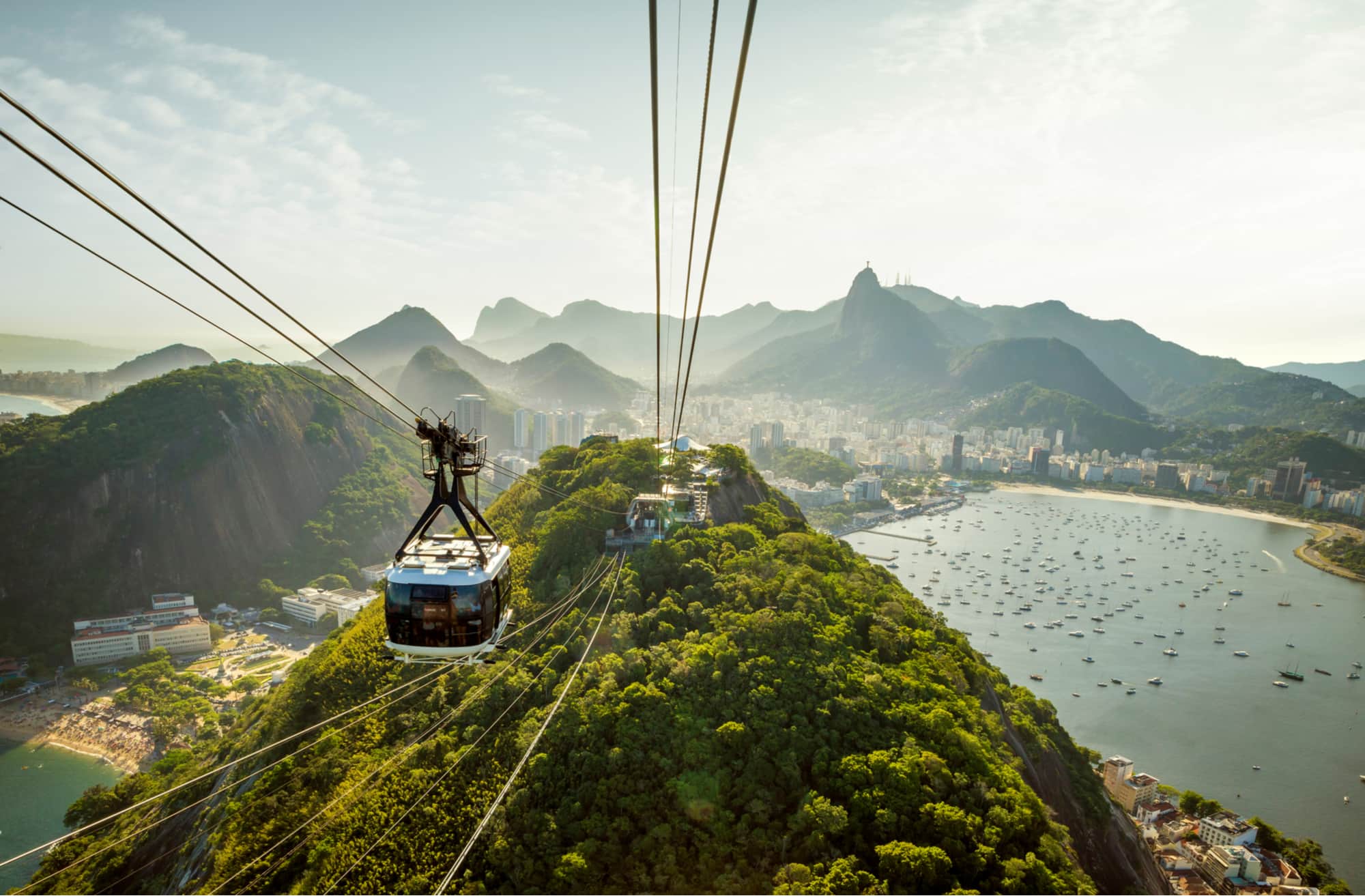
Brazil is a land of many wonders, but some definitely stand out. Check out this list of 8 must-see brazilian landmarks and make sure to add at least some of them to your itinerary!
Brazil is a vast country and being the size of a whole continent has its advantages, of course. In Brazil, you can visit incredible beaches, be close to wildlife, enjoy the nightlife of big cities and the calmness of countryside all in one single trip.
If you’re having a hard time choosing between all the incredible things you can do while in Brazil, this one’s for you. Here we have listed the top 8 landmarks in Brazil so you can add the ones you like the most to your trip and enjoy Brazil as much as you can.
Must-See Landmarks in Brazil
1. Iguazu Falls: to see the power of nature
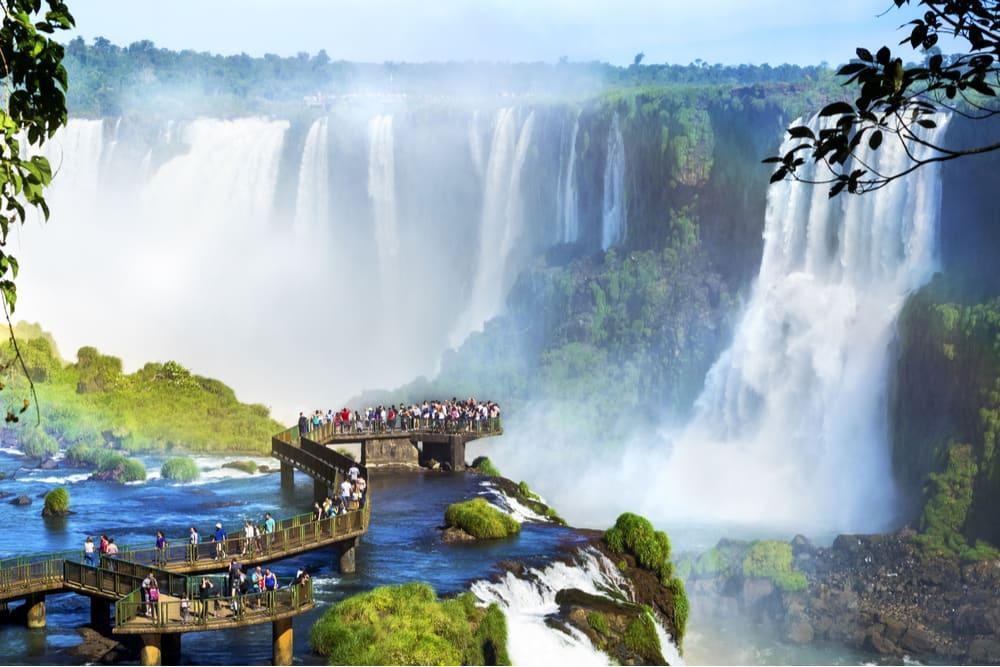
The Iguazu Falls (Cataratas do Iguaçu, in portuguese) is part of the incredible Iguazu National Park, which is listed as a World Heritage Site by UNESCO since 1986. Known for being one of the world’s largest and most impressive waterfalls, this one is a must-see for its display of the power of nature.
There, you can get a closer look at the falls as there’s a walkway that extends to the Devil’s Throat, where about half the river flow falls. For those looking for extra adventure, local agencies also offer separate tours that include an even closer look at the falls by boat (and yes, you’ll get soaked!).
Beyond the Iguazu Falls, you can also visit Itaipu Dam nearby, the second biggest hydroelectric power station in the world, and neighboring cities in Paraguay and Argentina.
2. Niterói Contemporary Art Museum: easy to miss near Rio
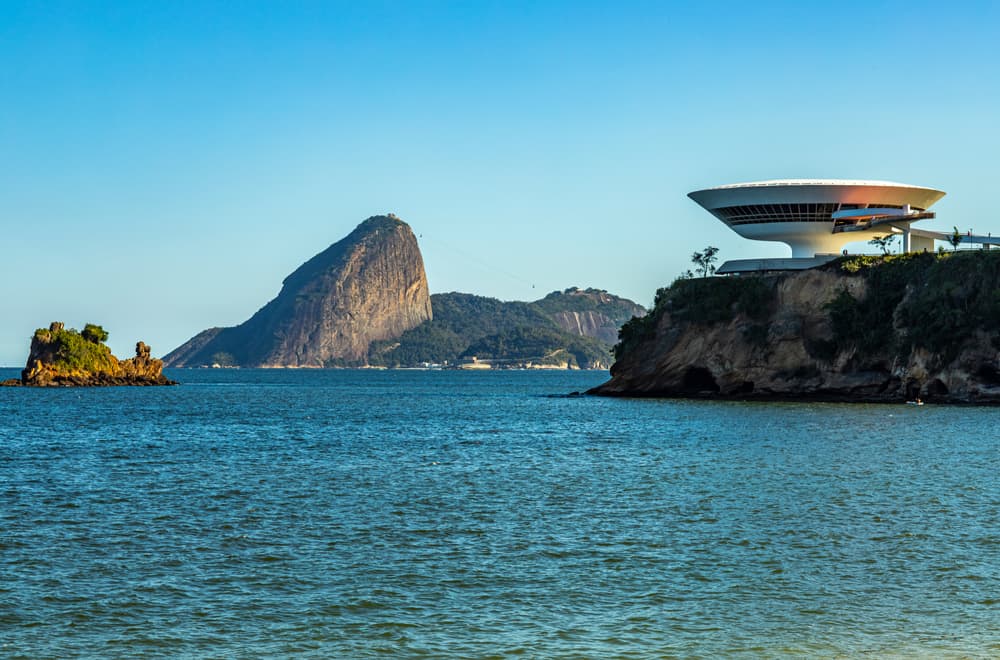
Rio de Janeiro is a must-see for every single tourist who arrives in Brazil. Niterói, right next to Rio, however, is easy to miss if you’re not paying good attention. Niterói is mostly visited by tourists for its incredible Contemporary Art Museum, designed by brazilian architect Oscar Niemeyer, considered one of the best of his generation.
The design of the museum is already enough reason to visit, but inside you’ll find more than 1.2 thousand pieces of contemporary art, making it the second biggest collection of its kind in Brazil. A must-see for art lovers, right?
To get to Niterói, the most common way of transportation is by car by crossing the Rio-Niterói bridge, one of the longest of its kind in the world, with an extension of more than 8 miles. Alternatively, you can access Niterói by a boat that crosses the Bay, a nice way to spend some time in the sea.
While you’re there, you can also take some time to see the historical site of the Santa Cruz da Barra Fortress, surrounded by incredible views of the Guanabara Bay.
3. Christ the Redeemer: the #1 must-see
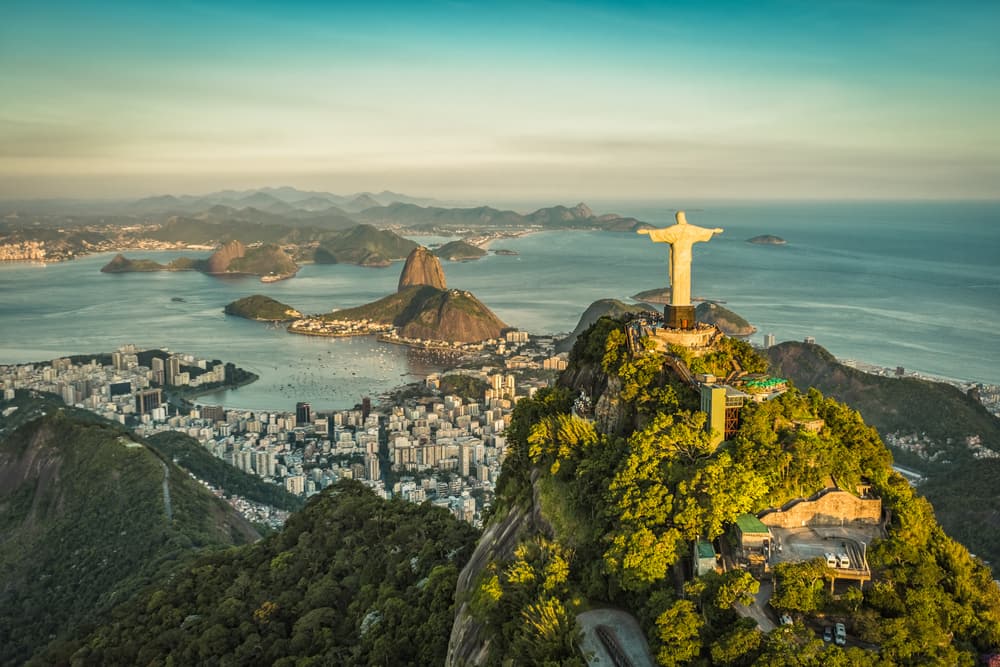
You can’t really say you’ve been to Brazil without visiting Christ the Redeemer, right? The Cristo Redentor, as it’s called in Portuguese, is certainly the most iconic Brazilian landmark. The statue, built in Art Deco style, was finished in 1931 and stands almost 125 feet tall at the top of the Corcovado Mountain, inside the Tijuca National Park.
When visiting Christ the Redeemer, make sure you pick the sunniest day of your stay in Rio. Because it’s so high up, cloudy days tend to affect the views from up there and, sometimes, you can’t barely even see it!
To get there, there are a few options you can choose from. You can enjoy a train ride, a van ride or a car ride—or even hike your way up! As you get closer, you’ll see that even after all the hicking or riding, there are still some way to go. Thankfully, there are stairs and elevators that make that much easier.
4. Sugarloaf Mountain: get ready for some incredible views
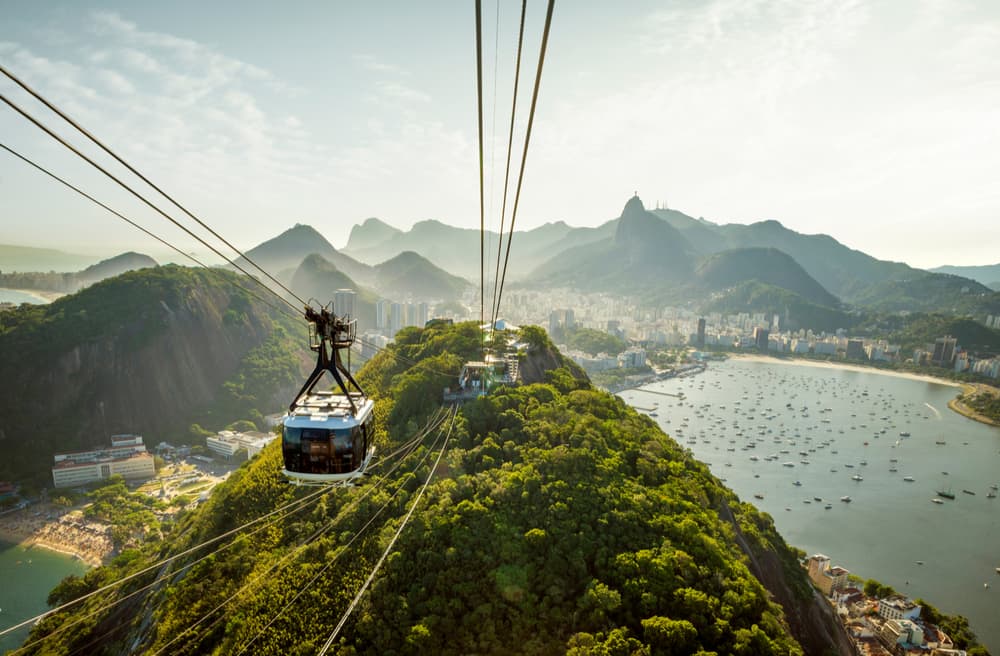
Sugarloaf Mountain, along with Christ the Redeemer, make two of the most visited tourist attractions of Rio de Janeiro. It’s very hard to choose between them, and there are valid arguments for both, so you’ll have to visit them and choose for yourself!
What we know by the name of Sugarloaf Mountain is actually made up of two mountains: Sugarloaf and Urca. Sugarloaf is the tallest one, standing at 1,300 feet above sea level (even taller than Christ the Redeemer!). Tourists can reach the summit by cable car, which is one of the most enjoyable things to do in Rio!
The visit starts at Praia Vermelha (Red Beach), where you can get a cable car to Urca. After that, you change cable cars to get to the actual Sugarloaf Mountain. Once you’re up there, the views are spectacular. You’re able to see Rio de Janeiro from every angle! And, again, be sure to pick a sunny day with clear skies for this!
5. Lençóis Maranhenses National Park: once in a lifetime nature experience

The Lençóis Maranhenses (“lençóis” means “bed sheets” in Portuguese, and looking above you kind of see where that comes from) are located in the state of Maranhão in northeastern Brazil. The northeast is known by its incredible beaches and this can be easily missed if you’re not paying close attention…
Different from anything else in Brazil, the Lençóis Maranhenses National Park has more than 40 miles of coastline, but people don’t go there because of the beaches. The #1 attraction are the dunes inside the park.
Most of the park is composed of dunes and much of it looks like an actual desert, but don’t be fooled. While the wind forms dunes the size of 10-story buildings, the rain fills in the gaps between the dunes with fresh water, creating natural lagoons.
The easiest way to visit Lençóis Maranhenses is arriving by plane to the capital of the state, São Luís, and then picking up a 4×4 there. The ride from São Luís to Barreirinhas, the nearest city, takes about 4 to 5 hours. From there, you can simply walk to the most famous lagoons or hire a guide to help you around.
6. Fernando de Noronha: for blue sea and luxury lovers

Fernando de Noronha is a group of 21 islands about 220 miles from Brazil’s coast and it is also a World Heritage Site for its incredible environment. There, the most popular tourist attraction is scuba diving to appreciate the wonders of the species that live there under the sea.
Fernando de Noronha has increasingly become a luxury destination for Brazilians and foreigners as the number of boutique hotels and fancy spas keep on rising. If luxury and exploring the sea sound good to you, you have to make sure to spend some days there!
When you visit the place, keep in mind that the entrance to the island and some of its beaches are limited to protect the environment. You can’t schedule a date for some of the attractions until you’re there, which can make planning a little bit difficult.
So when making a hotel reservation and buying plane tickets, it’s good to add some extra days to make sure you’ll see all the wonders of the island. Surely you won’t mind spending more time in paradise, right?
7. Inhotim Institute: one of the biggest outdoor museums in the world
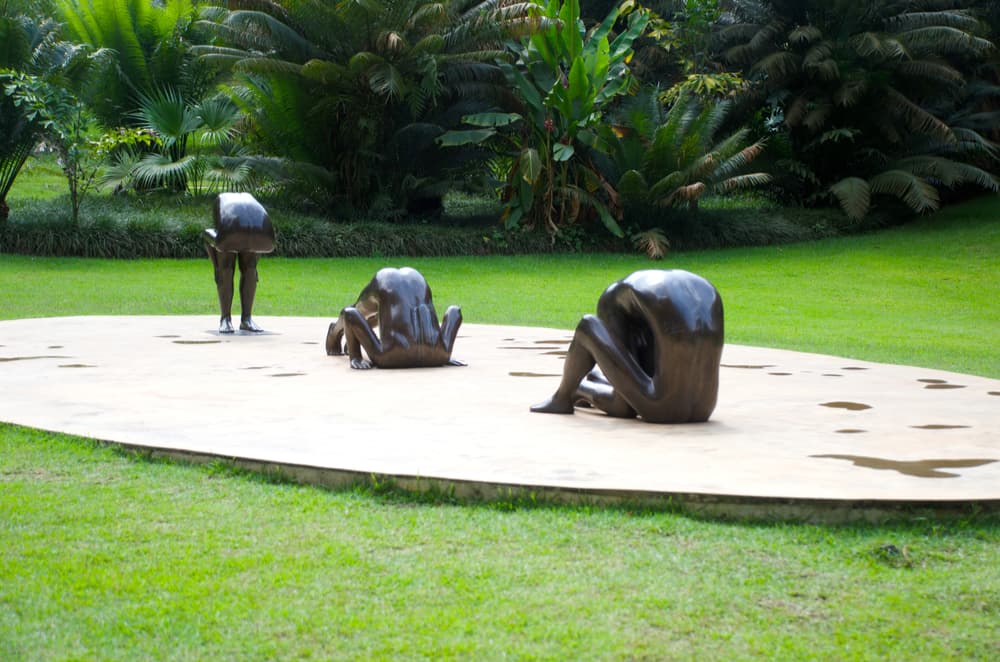
The Inhotim Institute, or simply Inhotim, is one of the most incredible museums in the world! It is located in a small city called Brumadinho, about 37 miles from the state capital, Belo Horizonte, and consists of more than 12 square miles of art installations inside and around the buildings that are part of the institute.
The institute’s huge space is not only about art, but also contains gardens, lagoons and a preserved Atlantic Forest area, commonly found in South America, but now greatly devastated by human activity.
While you’re there, be sure to visit every corner of the area! If you need to choose, though, here’s some art you just can’t miss: the Narcissus Garden, by Japanese artist and writer Yayoi Kusama; Red Shift, by Brazilian painter and sculptor Cildo Meireles; and From Mud, a Blade, by American director and artist Matthew Barney.
8. Bonito: if you’re passionate about wildlife and adventure

Bonito (literally “beautiful” in English) is a city in the state of Mato Grosso do Sul. This won’t be featured on many lists, just know that, but if you’re a fan of ecotourism and adventure, this is the place for you.
While you’re there, the biggest natural attractions are the Gruta do Lago Azul (Blue Lake Cave), filled with water of the craziest shade of blue; and the Recanto Ecológico Rio da Prata (Silver Lake Ecological Nook), where they offer everything from horse riding to scuba diving. There are many other attractions, so be sure to do some research beforehand so you don’t miss anything!
The easiest way to visit Bonito is by first flying to the state’s capital, Campo Grande. From there, you can rent a car to facilitate your visit. Bonito is about 185 miles from Campo Grande, and you can also visit the attractions there by car, or, if you choose another mode of transportation, local agencies offers private tours in vans.
So, are you ready for you’re next adventure in Brazil?







Leave a Reply